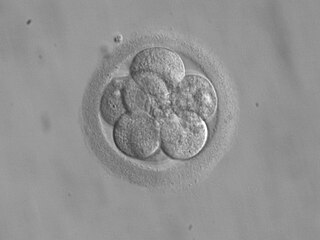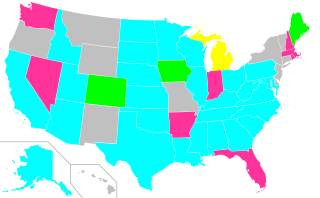At common law, damages are a remedy in the form of a monetary award to be paid to a claimant as compensation for loss or injury. To warrant the award, the claimant must show that a breach of duty has caused foreseeable loss. To be recognized at law, the loss must involve damage to property, or mental or physical injury; pure economic loss is rarely recognized for the award of damages.
A tort is a civil wrong, other than breach of contract, that causes a claimant to suffer loss or harm, resulting in legal liability for the person who commits the tortious act. Tort law can be contrasted with criminal law, which deals with criminal wrongs that are punishable by the state. While criminal law aims to punish individuals who commit crimes, tort law aims to compensate individuals who suffer harm as a result of the actions of others. Some wrongful acts, such as assault and battery, can result in both a civil lawsuit and a criminal prosecution in countries where the civil and criminal legal systems are separate. Tort law may also be contrasted with contract law, which provides civil remedies after breach of a duty that arises from a contract. Obligations in both tort and criminal law are more fundamental and are imposed regardless of whether the parties have a contract.
Roe v. Wade, 410 U.S. 113 (1973), was a landmark decision of the U.S. Supreme Court in which the Court ruled that the Constitution of the United States protected the right to have an abortion prior to the point of fetal viability. The decision struck down many State abortion laws, and it sparked an ongoing abortion debate in the United States about whether, or to what extent, abortion should be legal, who should decide the legality of abortion, and what the role of moral and religious views in the political sphere should be. The decision also shaped debate concerning which methods the Supreme Court should use in constitutional adjudication.
Malicious prosecution is a common law intentional tort. Like the tort of abuse of process, its elements include (1) intentionally instituting and pursuing a legal action that is (2) brought without probable cause and (3) dismissed in favor of the victim of the malicious prosecution. In some jurisdictions, the term "malicious prosecution" denotes the wrongful initiation of criminal proceedings, while the term "malicious use of process" denotes the wrongful initiation of civil proceedings.

The Unborn Victims of Violence Act of 2004 is a United States law that recognizes a "child in utero" as a legal victim, if they are injured or killed during the commission of any of over 60 listed federal crimes of violence. The law defines this term, “child in utero" as "a member of the species Homo sapiens, at any stage of development, who is carried in the womb."

The Alien Tort Statute, also called the Alien Tort Claims Act (ATCA), is a section in the United States Code that gives federal courts jurisdiction over lawsuits filed by foreign nationals for torts committed in violation of international law. It was first introduced by the Judiciary Act of 1789 and is one of the oldest federal laws still in effect in the U.S.
The system of tort law in Australia is broadly similar to that in other common law countries. However, some divergences in approach have occurred as its independent legal system has developed.
Transferred intent is a legal doctrine that holds that, when the intention to harm one individual inadvertently causes a second person to be hurt instead, the perpetrator is still held responsible. To be held legally responsible, a court typically must demonstrate that the perpetrator had criminal intent, that is, that they knew or should have known that another would be harmed by their actions and wanted this harm to occur. For example, if a murderer intends to kill John, but accidentally kills George instead, the intent is transferred from John to George, and the killer is held to have had criminal intent.
Vicarious liability is a form of a strict, secondary liability that arises under the common law doctrine of agency, respondeat superior, the responsibility of the superior for the acts of their subordinate or, in a broader sense, the responsibility of any third party that had the "right, ability, or duty to control" the activities of a violator. It can be distinguished from contributory liability, another form of secondary liability, which is rooted in the tort theory of enterprise liability because, unlike contributory infringement, knowledge is not an element of vicarious liability. The law has developed the view that some relationships by their nature require the person who engages others to accept responsibility for the wrongdoing of those others. The most important such relationship for practical purposes is that of employer and employee.

Canadian tort law is composed of two parallel systems: a common law framework outside Québec and a civil law framework within Québec, making the law system is bijural, as it is used throughout Canadian provinces except for Québec, which uses private law. In nine of Canada's ten provinces and three territories, tort law originally derives that of England and Wales but has developed distinctly since Canadian Confederation in 1867 and has been influenced by jurisprudence in other common law jurisdictions. As most aspects of tort law in Canada are the subject of provincial jurisdiction under the Canadian Constitution, tort law varies even between the country's common law provinces and territories.
Morissette v. United States, 342 U.S. 246 (1952), is a U.S. Supreme Court case, relevant to the legal topic of criminal intent. It described two classes of crimes, those requiring a mental state, and those that do not. It did not delineate a precise line between them. In one class are traditional crimes, some of which have been around since before laws existed, such as stealing. This first class of crimes required a jury to find both an act, a harm, and an intent to act against the law. The second class, public welfare offenses, did not require a criminal mental state such as intent or knowledge. These included regulatory laws necessary for the public health and welfare, such as relating to food and drug safety.
Fetal rights are the moral rights or legal rights of the human fetus under natural and civil law. The term fetal rights came into wide usage after Roe v. Wade, the 1973 landmark case that legalized abortion in the United States and was essentially overturned in 2022. The concept of fetal rights has evolved to include the issues of maternal substance use disorders, including alcohol use disorder and opioid use disorder. Most international human rights charters "clearly reject claims that human rights should attach from conception or any time before birth." While most international human rights instruments lack a universal inclusion of the fetus as a person for the purposes of human rights, the fetus is granted various rights in the constitutions and civil codes of some countries.

Dobson v Dobson, [1999] 2 SCR 753 was a landmark decision by the Supreme Court of Canada on a pregnant woman's legal duties in tort law. It was the first time the Supreme Court of Canada had to consider this issue. The majority of the Court found that tort claims cannot be brought against women for negligence toward the fetus during pregnancy.
Feres v. United States, 340 U.S. 135 (1950), combined three pending federal cases for a hearing in certiorari in which the Supreme Court of the United States held that the United States is not liable under the Federal Tort Claims Act for injuries to members of the armed forces sustained while on active duty and not on furlough and resulting from the negligence of others in the armed forces. The opinion is an extension of the English common-law concept of sovereign immunity.
Nasciturus pro iam nato habetur, quotiens de commodis eius agitur is a Latin legal maxim that refers to a law that grants or protects the right of a fetus to inherit property. The maxim translates, "The unborn is deemed to have been born to the extent that his own benefits are concerned". "Nasciturus" literally translates to "one who is to be born" and refers to a conceived foetus: a living child who has not yet been born. Pursuant to the legal principle, the fetus is presumed to have been born for the purposes of inheritance. The principle was reified in Roman law and continues to be implemented today in most European nations, in the Americas, and in South Africa.
The born alive rule is a common law legal principle that holds that various criminal laws, such as homicide and assault, apply only to a child that is "born alive". U.S. courts have overturned this rule, citing recent advances in science and medicine, and in several states feticide statutes have been explicitly framed or amended to include fetuses in utero. Abortion in Canada is still governed by the born alive rule, as courts continue to hold to its foundational principles. In 1996, the Law Lords confirmed that the rule applied in English law but that alternative charges existed in lieu, such as a charge of unlawful or negligent manslaughter instead of murder.

The beginning of human personhood is the moment when a human is first recognized as a person. There are differences of opinion about the precise time when human personhood begins and the nature of that status. The issue arises in a number of fields, including science, religion, philosophy, and law, and is most acute in debates about abortion, stem cell research, reproductive rights, and fetal rights.
Wrongful birth is a legal cause of action in some common law countries in which the parents of a congenitally diseased child claim that their doctor failed to properly warn of their risk of conceiving or giving birth to a child with serious genetic or congenital abnormalities. Thus, the plaintiffs claim, the defendant prevented them from making a truly informed decision as to whether or not to have the child. Wrongful birth is a type of medical malpractice tort. It is distinguished from wrongful life, in which the child sues the doctor.

Born alive laws in the United States are fetal rights laws that extend various criminal laws, such as homicide and assault, to cover unlawful death or other harm done to a fetus in utero or to an infant that has been delivered. The basis for such laws stems from advances in medical science and social perception, which allow a fetus to be seen and medically treated as an individual in the womb and perceived socially as a person, for some or all of the pregnancy.

Roche v Roche [2010] 2 IR 321: [2009] IESC 82 is an Irish Supreme Court case which affirmed the High Court decision that frozen embryos did not constitute the “unborn” within the meaning of Article 40.3.3 of the Irish Constitution. The spirit of the Supreme Court's judgement was that frozen embryos were not extended the same right to life as given to embryos protected in the womb. With an increase in IVF among couples, legal issues arise when the couple decide to separate or divorce. This is a landmark case as it gave a judgement on such a circumstance where a couple has separated but there are surplus embryos frozen at a clinic. The Court made its decision by ultimately taking into account the right to reproduce.





